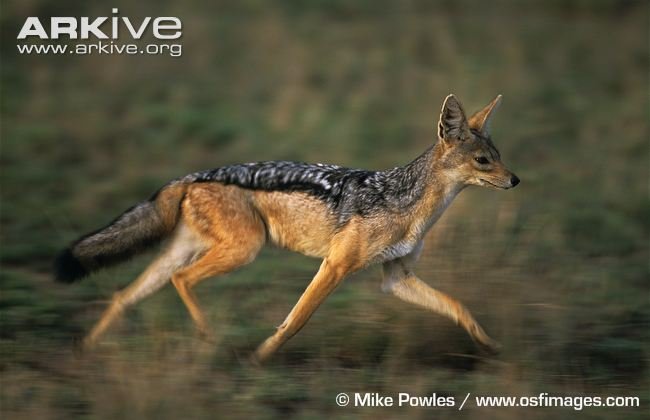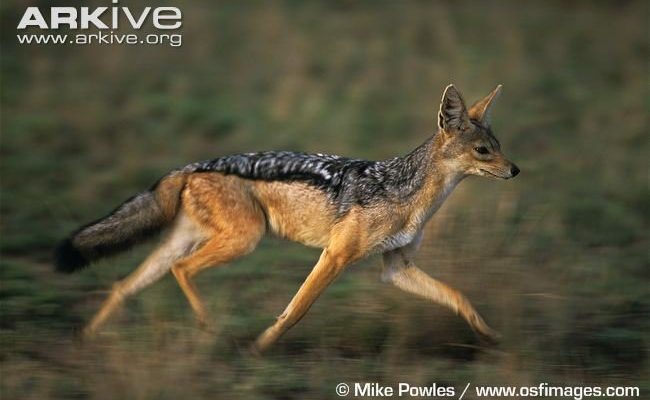
So, what’s the deal with black-backed jackals? These creatures, known for their striking black fur along their backs, are more than just a pretty face. Understanding their evolutionary history helps us appreciate their role in the ecosystem and their adaptations to survive in harsh environments. Grab a cup of coffee, and let’s dive into the incredible journey of the black-backed jackal.
What Are Black-Backed Jackals?
To kick things off, let’s get familiar with the black-backed jackal itself. These medium-sized canids are easily identifiable by their bushy tails and, as their name suggests, the distinct black coloration on their backs. They’re part of the Canidae family, which also includes dogs, wolves, and foxes. Think of them as the clever tricksters of the wild, always on the lookout for their next meal.
Black-backed jackals are typically found in the open savannas, grasslands, and even deserts of southern Africa. They have a keen sense of smell and a sharp hearing, making them excellent hunters. But they’re not just lone wolves—these jackals often form monogamous pairs and can be seen working together to hunt small mammals, birds, and even scavenging from larger predators’ kills. Their social structure and behavior are both fascinating and pivotal to their survival.
The Origins: Where Do They Come From?
Now, if we take a step back in time, the evolutionary roots of the black-backed jackal trace back to ancient ancestors. Canids first appeared around 40 million years ago and evolved from a single ancestor into the diverse family we know today. The black-backed jackal emerged roughly 2 million years ago, during the Pleistocene epoch when climate changes transformed habitats across the globe.
Interestingly, the black-backed jackal shares its ancestry with the side-striped jackal, another species that roams parts of Africa. These two species diverged due to geographical barriers and their respective adaptations to different environments. Picture them as cousins who took different paths in life; one took to the open savanna, while the other preferred thicker bushlands.
Physical Adaptations That Tell a Story
You might be wondering why the black-backed jackal looks the way it does. Its physical features are a direct response to its environment. For one, the black back serves an important purpose: it helps regulate body temperature. In the hot African sun, the coloration helps the jackal absorb warmth when needed and stay cooler in the heat.
Additionally, their long legs and slender bodies allow them to cover ground quickly as they hunt or evade threats. Black-backed jackals are also known for their agility and sharp reflexes, giving them an edge whether they’re chasing down prey or navigating through thick brush. It’s like they’ve evolved into little survival machines, perfectly suited to their habitat.
Behavioral Traits That Stand Out
When it comes to behavior, black-backed jackals are incredibly resourceful. They often employ various hunting strategies based on their surroundings. For example, when hunting alone, they may rely on stealth and patience, creeping up on small mammals like rodents. However, when they’re part of a pair, they can work together, using coordinated movements to chase prey into each other’s paths.
Moreover, these jackals are opportunistic feeders. They don’t just hunt; they scavenge as well. In fact, they’re often seen hanging around the larger predators like lions or hyenas, waiting to swoop in on leftovers. Their adaptability when it comes to food sources shows just how clever they can be—like knowing exactly where to find a free meal!
The Role in Ecosystems: Why They Matter
Black-backed jackals play a crucial role in their ecosystems. As both hunters and scavengers, they help regulate populations of rodents and small mammals, preventing overpopulation. This control is essential for maintaining a healthy balance in the ecosystem. Imagine a balance scale; without the jackals, one side could tip over with too many small animals, causing a ripple effect throughout the food web.
Their presence also benefits larger predators by keeping the environment clean from carrion. By scavenging, they help dispose of dead animals, which can prevent the spread of disease. So, next time you hear about predators and prey, remember that black-backed jackals are quietly holding it all together behind the scenes.
Conservation Status: Challenges They Face
Despite their adaptability, black-backed jackals are not without their challenges. Human activities, such as habitat destruction, farming, and hunting, have put pressure on their populations. In some areas, they’re viewed as pests due to their scavenging habits, leading to conflicts with farmers who see them as threats to livestock.
Conservation efforts are crucial to ensuring that these fascinating creatures can continue to thrive. Protecting their habitats and promoting coexistence is essential for their survival. It’s like tending to a garden; if we nurture the environment they live in, the black-backed jackals can flourish alongside other wildlife.
The journey of the black-backed jackal is a testament to nature’s ingenuity. Their evolutionary history is marked by adaptability, cleverness, and resilience. As you enjoy the diverse wildlife of Africa, take a moment to appreciate these sly little jackals and the role they play in their ecosystems. Their story reminds us that every creature, big or small, has a unique place in the tapestry of life.
So, the next time you spot a black-backed jackal on a nature documentary or in the wild, remember—you’re looking at a remarkable survivor with an incredible evolutionary tale that continues to unfold.

